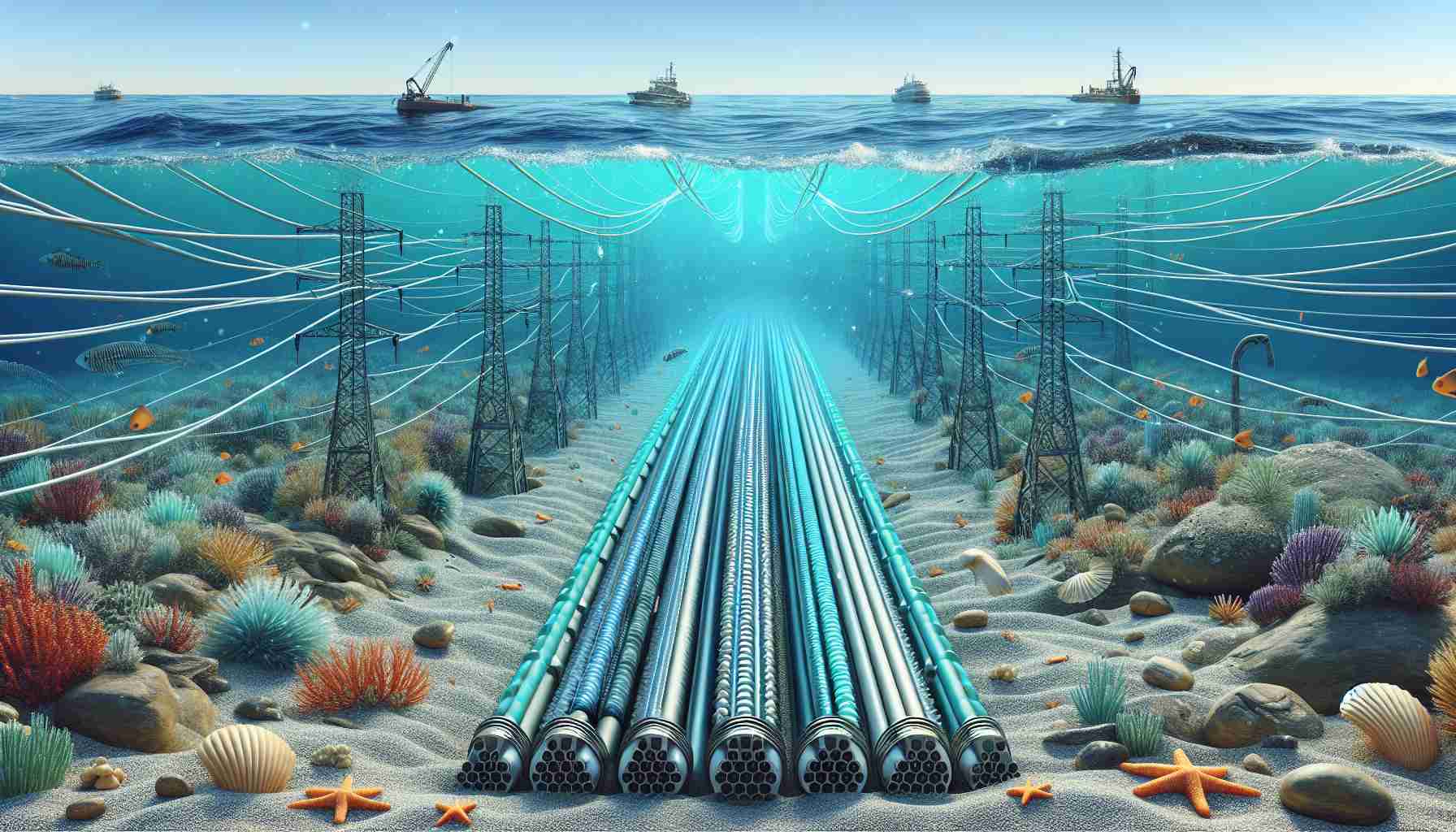A cutting-edge subsea power cable project promises to transform the distribution of renewable electricity across regions. The innovative initiative aims to enhance grid efficiency during periods of fluctuating energy demand and low wind activity. Instead of importing large quantities of energy, this groundbreaking endeavor is poised to significantly boost the export capacity of clean electricity.
The ambitious project will involve the installation of advanced cables spanning 315 miles from Aberdeen to North Yorkshire, a technological feat that underscores the ongoing shift towards sustainable energy sources. With an estimated cost exceeding £4 billion due to inflationary factors, the investment represents a crucial step in modernizing the energy transmission network. The upcoming converter station near Peterhead will serve as a pivotal hub for transmitting high-voltage direct current beneath the seabed.
Anticipated to power millions of homes, the project signals a monumental stride towards a greener and more resilient energy infrastructure. As regulatory approvals pave the way for swift implementation, analysts emphasize the pivotal role of such initiatives in bolstering energy security and reducing consumer bills. Moreover, the integration of additional subsea cables along the east coast underscores a broader commitment to sustainable energy transmission at a national scale.
As construction progresses and offshore cable laying commences, the future of energy distribution in the region appears increasingly promising, heralding a new era of sustainable power delivery.
A groundbreaking Seabed Power Link project is set to revolutionize energy distribution dynamics, with a focus on enhancing renewable electricity transmission. This innovative endeavor not only aims to improve grid efficiency during periods of fluctuating energy demand but also intends to stimulate the export capacity of clean electricity, reducing the reliance on traditional fossil fuel-based energy sources.
Key Questions:
1. What makes Seabed Power Link a game-changer in the energy sector?
2. What are the main challenges associated with implementing such a large-scale subsea power cable project?
3. How will this project impact the overall energy landscape in the regions it serves?
Answers and Insights:
1. The Seabed Power Link project leverages advanced technologies to enable efficient transmission of renewable energy across vast distances, contributing to a more sustainable energy future.
2. Challenges such as environmental impact assessments, securing regulatory approvals, and managing the technical complexities of laying undersea cables are critical considerations for the successful execution of the project.
3. The implementation of Seabed Power Link is expected to modernize energy transmission networks, enhance energy security, and support the transition towards greener energy sources on a significant scale.
Advantages of Seabed Power Link:
– Facilitates the transmission of renewable energy over long distances, connecting regions with high renewable energy potential to areas with high energy demand.
– Reduces carbon emissions by enabling the utilization of clean electricity generated offshore, thereby contributing to climate change mitigation efforts.
– Enhances grid resilience and reliability by diversifying the energy sources and reducing dependence on conventional power generation methods.
Disadvantages of Seabed Power Link:
– High initial investment costs may pose financial challenges, requiring careful planning and investment strategies.
– Environmental concerns related to marine ecosystems and habitat disruption during cable installation and maintenance.
– Technical complexities and operational risks associated with maintaining and repairing undersea cables in harsh marine conditions.
Related Links:
– U.S. Department of Energy
– International Energy Agency
In conclusion, the Seabed Power Link project represents a significant milestone in advancing sustainable energy distribution, albeit with inherent challenges that need to be addressed diligently. By harnessing the power of undersea cables, this transformative initiative has the potential to reshape how electricity is transmitted and distributed, paving the way for a more resilient and environmentally conscious energy future.
